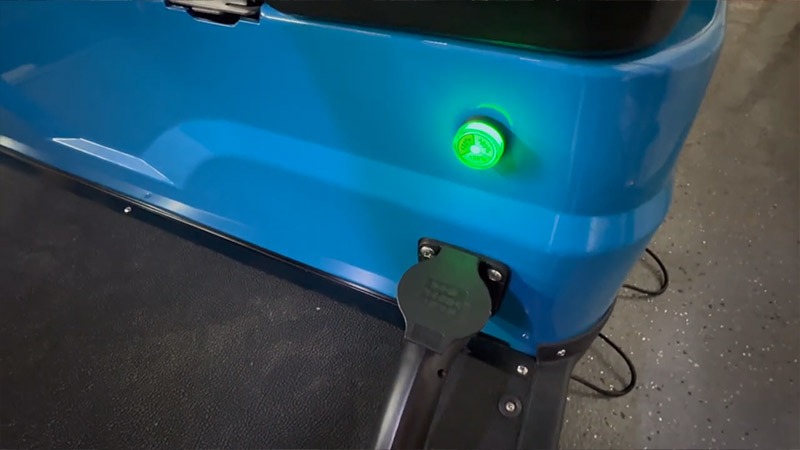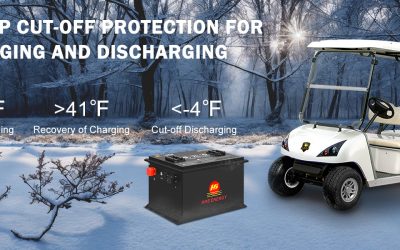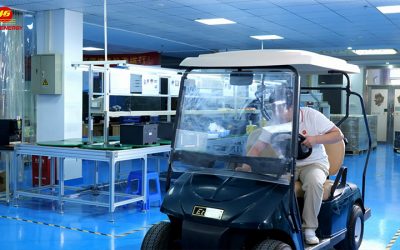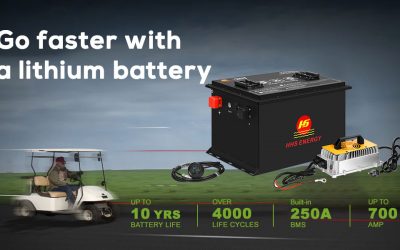Lithium Golf Cart Battery Manufacturer, Suppliers, Factory > News > Golf cart battery > How to charge golf cart batteries? Lithium vs Lead Acid.
How to charge golf cart batteries? Lithium vs Lead Acid.

Here’s a step-by-step guide on how to charge both lithium and lead-acid golf cart batteries:
1. Charging Lithium Golf Cart Batteries
Lithium batteries are low-maintenance and more efficient, but still need proper care.
Steps to Charge Lithium Batteries:
- Use the Right Charger: Always use a lithium-compatible charger. Chargers designed for lead-acid batteries could damage lithium batteries.
- Charge After Use: Lithium batteries can be charged after every use, regardless of how much charge is left. Partial charging does not affect battery health, unlike lead-acid batteries.
- Avoid Extreme Temperatures: Charge in temperatures between 32°F to 113°F (0°C to 45°C).
- Fast Charging: Lithium batteries usually take between 2-6 hours for a full charge, depending on their size and the charger used.
- Top-Off Frequently: Lithium batteries don’t need to be fully discharged before charging. Keep them topped off regularly to maintain performance.
- Storage: If storing the battery for an extended period, charge to around 50-80% and recharge periodically if needed.
2. Charging Lead-Acid Golf Cart Batteries
Lead-acid batteries are older technology and require more maintenance to ensure longevity.
Steps to Charge Lead-Acid Batteries:
- Use the Correct Charger: Ensure you’re using a lead-acid-specific charger. Do not use a lithium charger.
- Charge After Full Use: Lead-acid batteries should be charged only after deep discharges (i.e., when they are near depletion). Partial charges can reduce battery efficiency over time due to the “memory effect.”
- Charge Overnight: Charging a lead-acid battery can take 8-10 hours, so charging overnight is common practice. However, don’t leave it plugged in too long to avoid overcharging.
- Water Levels: Check water levels before charging (for flooded lead-acid types) and top up with distilled water if necessary. Never let the battery plates become exposed.
- Temperature Considerations: Charge in a cool, ventilated area to avoid heat build-up. Lead-acid batteries generate more heat while charging, so avoid charging in very hot environments.
- Maintenance Charging: If the cart is not used regularly, charge the battery every 30-45 days to prevent it from discharging too deeply.
Special Considerations:
- Equalization Charge: Lead-acid batteries occasionally need an equalization charge to balance the individual cells and remove sulfation. This can be done every 30-50 charging cycles.
- Avoid Overcharging: Overcharging can cause excessive water loss, leading to damage or reduced battery life.
Key Differences Between Lithium and Lead-Acid Batteries:
- Charging Time: Lithium batteries charge much faster (2-6 hours), while lead-acid can take 8-10 hours.
- Partial vs. Full Discharges: Lithium batteries thrive with partial charging and do not need to be fully discharged, while lead-acid batteries should be discharged close to empty before recharging.
- Efficiency: Lithium batteries are more efficient, offering more usable energy and longer cycles, while lead-acid batteries degrade faster if not properly maintained.
By following the appropriate steps for each type of battery, you can ensure both lithium and lead-acid golf cart batteries maintain optimal performance and extend their lifespans.




